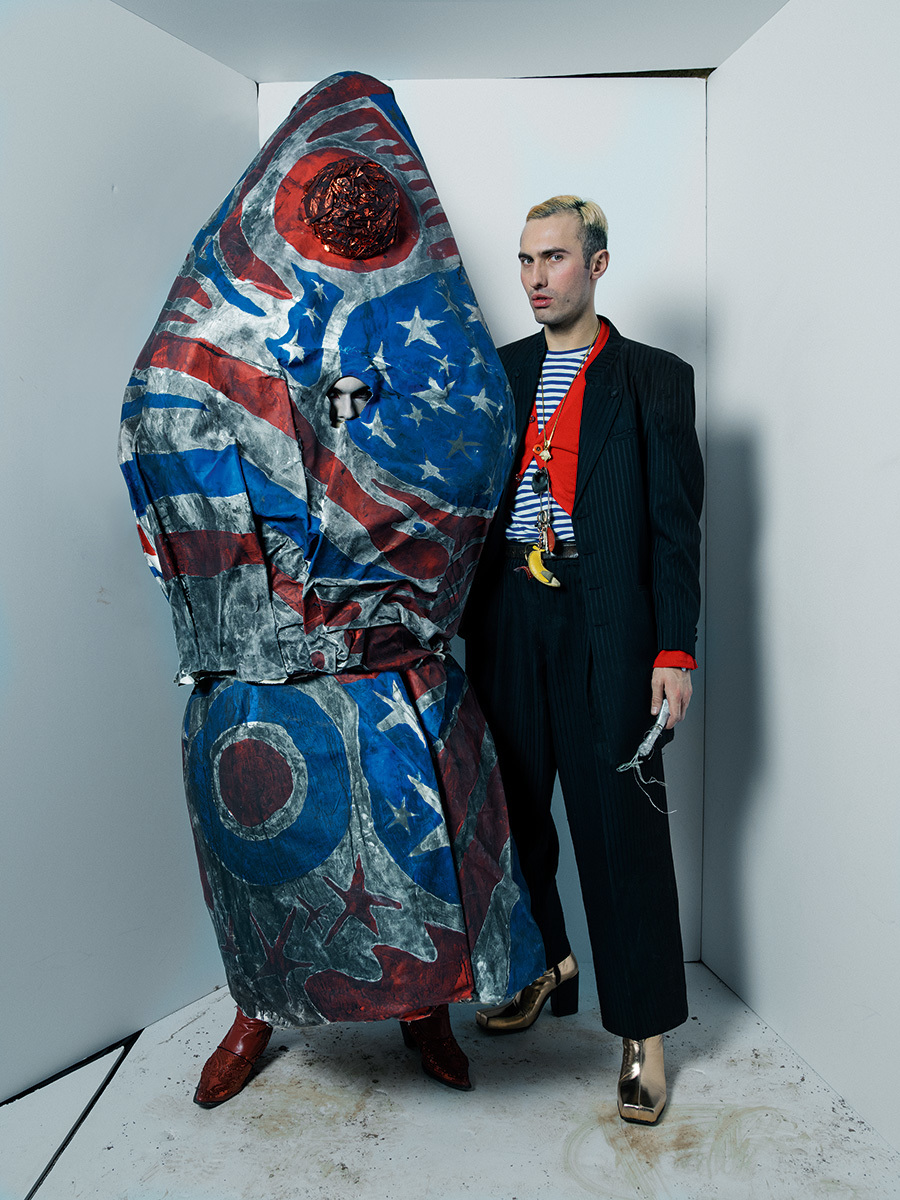Charles Jeffrey is climbing the grand staircase of Hertford House, the Georgian mansion that holds The Wallace Collection. It’s his favorite place in London. “A nice fit” as he reflects, passing the magnificent balustrade forged as abundant cornucopias. “Like when you’ve got really nice shoes on,” he continues. His are the princely buckle kind, like something out of the court of Versailles. That the Renaissance and Baroque paintings of this Marylebone museum — and not the queers and steers of his flamboyant LOVERBOY club night in Stoke Newington — inspired the 26-year-old designer’s first three collections may surprise some. Or maybe it won’t. With his pale powdered skin, rouge cheeks, and blackened eyebrows, young Charles looks every bit the mad 18th century king, basking in the gleam of the silk tapestries and gilded curlicues of these opulent salons, the works in which he’s spent countless hours studying since he first arrived in London ten years ago, bound for Central Saint Martins. “It’s like going into a shop,” he explains. “As a fashion student I looked at stuff feeling terrified about not being able to make it, but now that I have a pattern-cutter who can make anything, it can actually happen. Like that ruff,” he gestures, gazing up at the neck accessory in Portrait of a Flemish Lady by Cornelis de Vos, 1621-22.
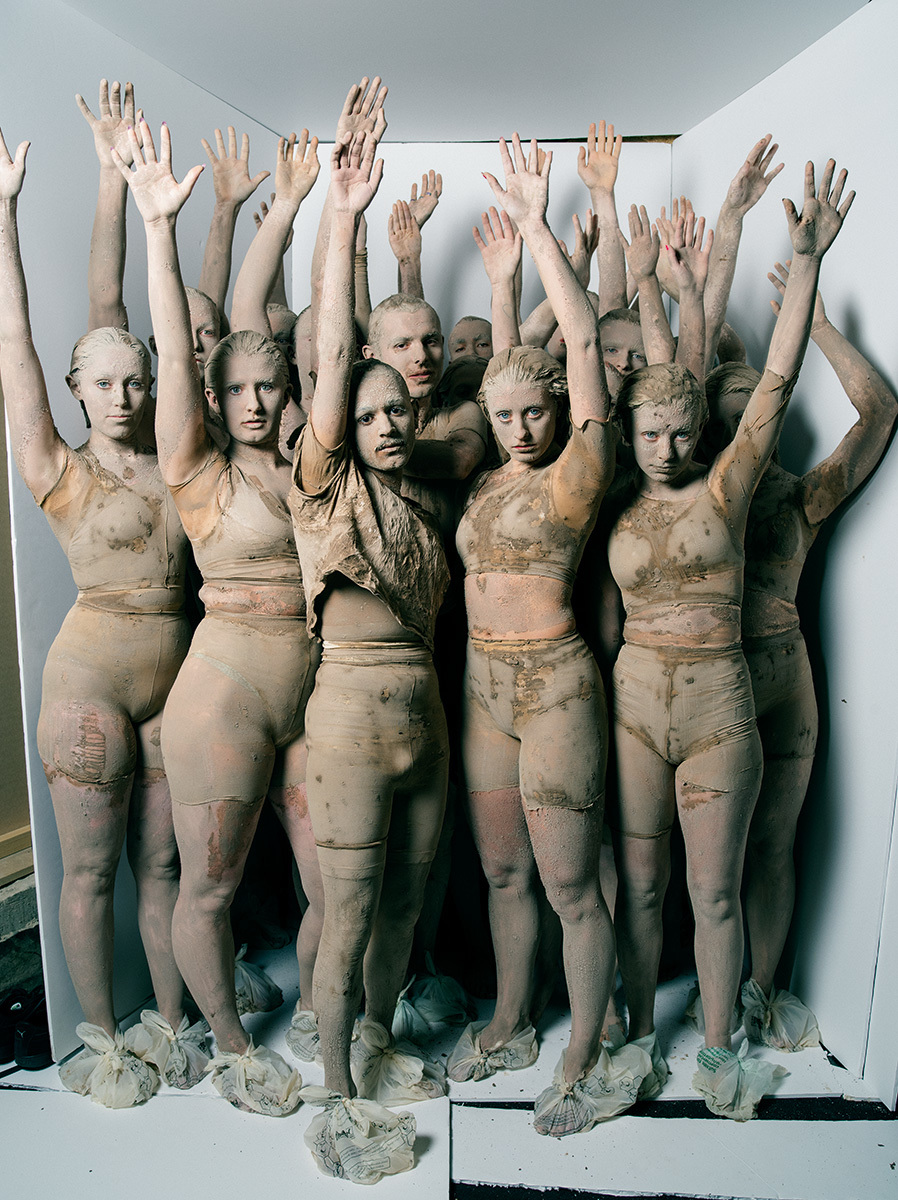
Like some futuristic Venetian carnival, the fall/winter 17 collection he showed under Fashion East’s MAN umbrella in January was a sensory feast of all the things he can now pick and choose from and make his own. Charles is the ruling doge of London’s current movement of anti-establishment club kids: a rainbow revolution he calls LOVERBOY comprised of a club night, a fashion brand, and an all-embracing celebration of individuality and diversity in the midst of a reactionary political climate. On his runway, he expressed it in sci-fi jackets sculpted like Renaissance doublets, ruffles, and bowl haircuts in tow. A priestly velvet cloak; part Spanish Inquisition, part Star Trek. Or a Regency dress coat in bright orange, padded and polished to spacesuit dimensions. Charles had been watching Painted Ladies, the 1996 documentary that follows Dame Vivienne Westwood around The Wallace Collection. “She looked at artworks and would reference dresses straight from the paintings,” he recounts. “And I was reading a book at the time called Steal Like An Artist, which was like, ‘if you’re really interested in someone’s aesthetic, look at what they looked at and do your own version of it.’ I really took that in.”
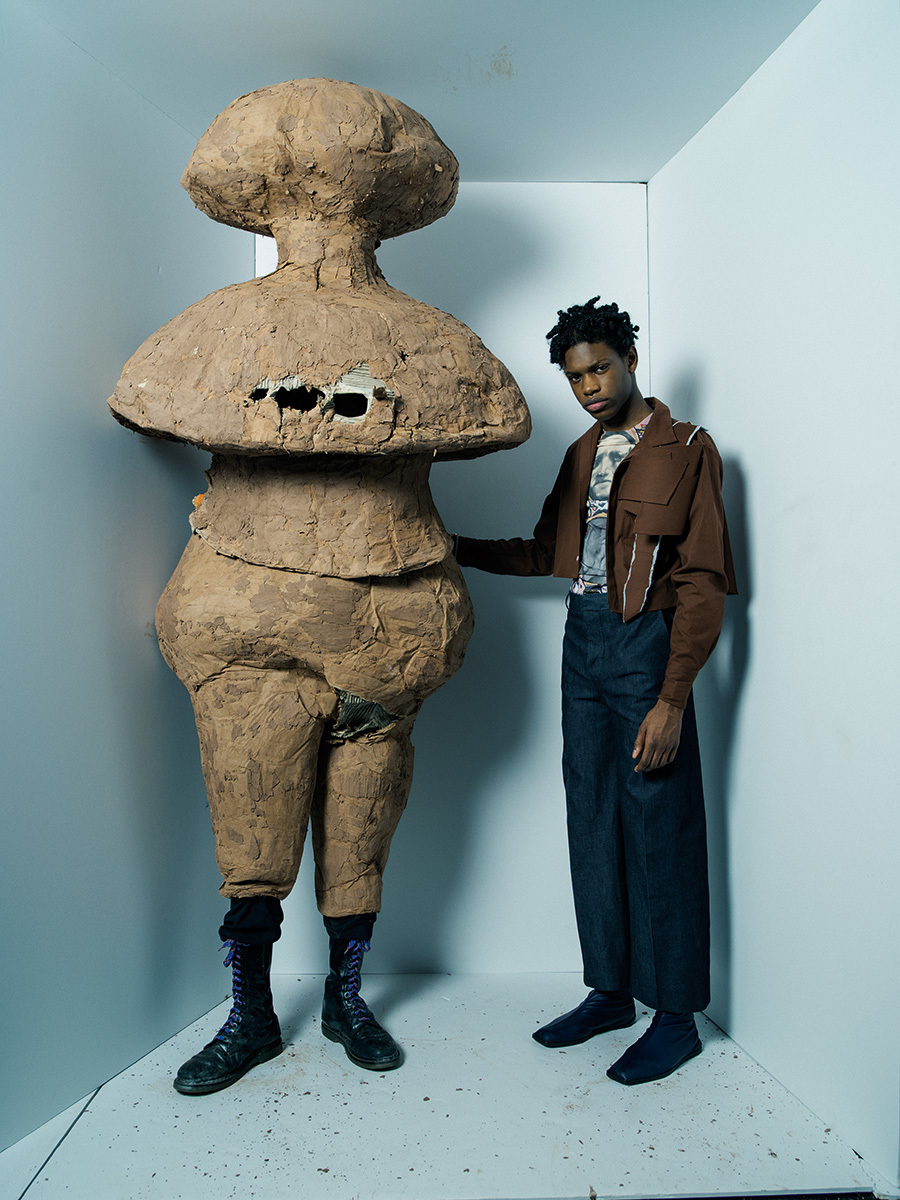
For the Scottish designer, who is joining the industry in an age where everything has been said before, it’s a philosophy that invigorates and justifies his work. He references costume of the ages on the same conditions he nods at more recent fashion history, from the aesthetics of John Galliano, Jean Paul Gaultier, and indeed Westwood, to one of the paintings he pauses by in the museum, Horace Vernet’s 1823 portrait of fictional Scottish legend Allan M’Aulay. “I grew up with Westwood through my mom. She’d always get something from Westwood from my dad every Christmas. But it’s more of a spirit,” Charles reflects. “There’s a kind of attitude and way of looking at things, which they all share. It’s an appreciation of history, a freedom of thought, no boundaries; and it’s also queer, not necessarily in terms of ‘gay,’ but an off-kilter way of looking at things. Westwood had that from punk, Gaultier came from the gay scene,” and so on. Like they did in their heydays, Charles has managed to “make waves in the fashion industry,” as his entry notes on The Business of Fashion‘s list of 2016’s most influential industry players, in a time when that isn’t easily achieved. He’s done it the old-fashioned way, putting on the kind of exuberant gatherings, which have historically found their way to London’s nightlife with decades in between.

LOVERBOY, the monthly night he launched at Vogue Fabrics in 2014 to finance his MA degree at Saint Martins, recreated a forum for the city’s colorful ladies and gentlemen and everyone in between: a hedonistic fancy dress party of fantastical freaks in the spirit of Boombox and Ponystep, which ruled east London ten years ago, and the 80s Taboo that inspired them. Charles fronts a new age of east London club kids — his LOVERBOYS — who work with him on his label, walk his shows, and make up his party posse. He has the intrinsic, magnetic charm of a great leader, not to mention the dashing, classic good looks that often go hand-in-hand, on this day iced in a daywear take on Commedia dell’Arte makeup, copious metal chokers and necklaces, layered shirts, and a double-breasted suit that’s missing a button. Charles’s ascent to the throne echoes that of all the small-town boys, who’ve held it before him. Born in 1990, he was raised largely by his grandparents until his mother married the army man he now calls dad. He moved the family out of their native Scotland to Hanau in Germany when Charles was three. (“I don’t speak German but I can if you like,” he winks with fitting reference to Lady Gaga’s “Scheiße.”)
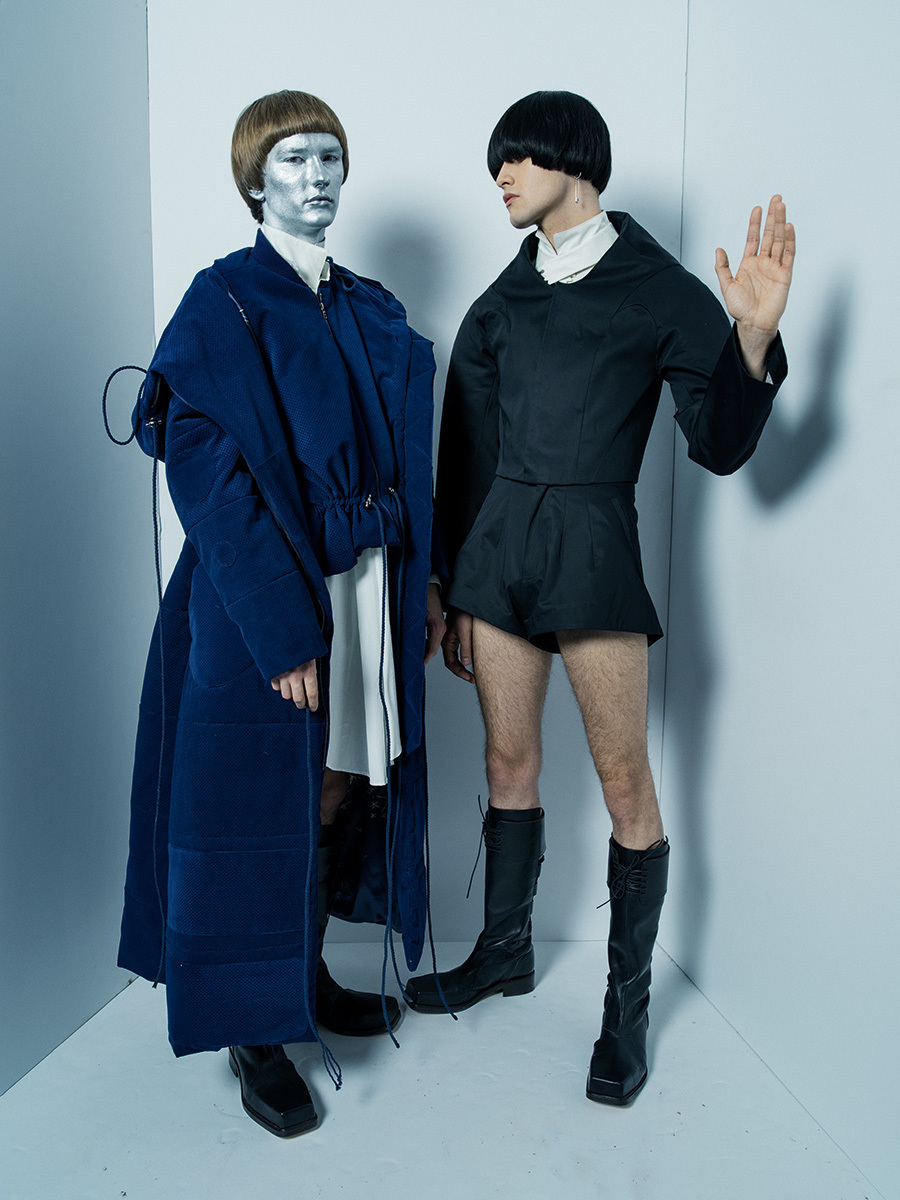
Cezar Banaszczyk and James Spencer
An uprooted childhood followed: they moved to Surrey when he was eight, to Brecon when he was nine, and back to Scotland the year after. “I played with swords until the age of fourteen,” he admits, walking through the Fragonard salon at Hertford House with its delicate rococo blue. “Then I discovered masturbation.” During his teenage years in Cumbernauld, a suburb of Glasgow, Charles would lose himself in MySpace accounts rich on east London’s BoomBox-fueled nightlife and adopt its fetish-y trademark look, summed up in the early work of Gareth Pugh, whose avant-garde shows were igniting a new era for British fashion. “I remember the first time I saw the ‘Sheena Is a Parasite’ video by The Horrors where Samantha Morton turns into an octopus. It was all black leather, black makeup, all very monochromatic. It was chaos and crazy, and I never connected with something as much in my life.” It was 2006 and Charles was 16. “We didn’t have much money,” he says, a casual statement he’ll later elaborate on, “and I remember going to Primark to buy my women’s skinny jeans, and my friend Stevie and I running around Glasgow with loads of jewelry and makeup on, fulfilling our fantasy on a budget.” But being the only gay in the village, needless to say, came with a price.
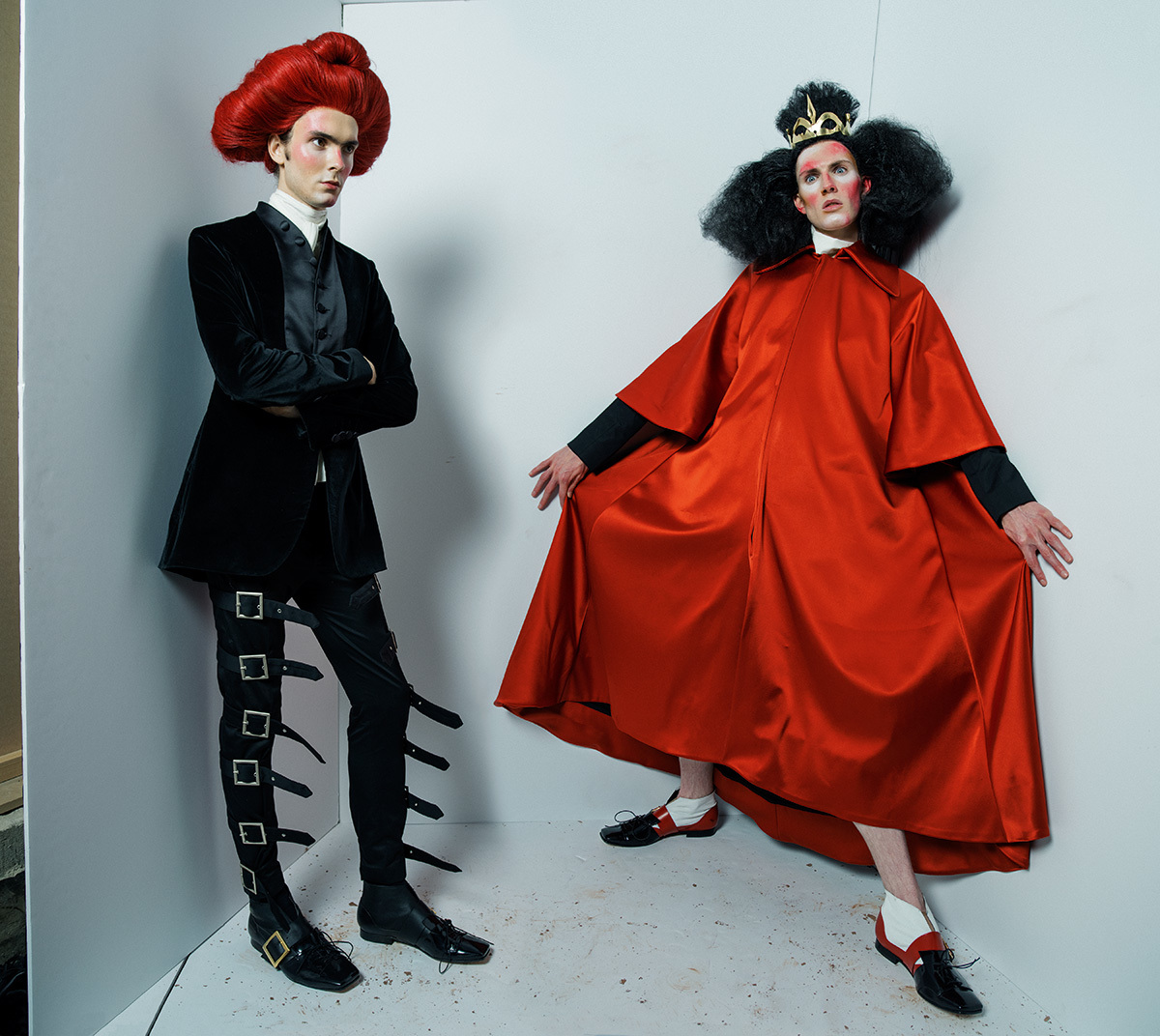
That year he was attacked in George Square in Glasgow, “punched from behind, smack in my face. I had braces and my cheek got caught in them, so I had to go to hospital to get them taken out,” Charles recalls. The incident only amplified his provincial rebellion, much to his mother’s concern. “She was always supportive but terrified of me getting hurt. ‘Charles, you can’t go out like that!’ So I would leave the house really dowdy and get ready on the train to Glasgow. Because I was like, ‘fuck it, I don’t wanna be here.’ It was escapism. It was almost like I made up my own version of London in my own little body,” he reflects. His arrival in London in 2007, where he enrolled on the foundation course at Saint Martins and lived in halls, was like the opening scenes of any of the great cinematic accounts of iconic nightlife, like Brian’s meeting with the Kit Kat Club in Cabaret or Christian’s starry-eyed musings on the debauchery of the Moulin Rouge! For Charles, paradise was Ponystep, the club night that had taken over BoomBox’s flamboyant legacy. “It was like it was the most important thing I’d ever done, almost more important than being at Saint Martins. I wore black, slick leggings from American Apparel, a tin foil top, and I wrapped tulle and slashed parcel paper around myself. I looked like a band-aid,” he recalls.

“Just being there, waiting in the line, seeing Gareth Pugh and Christopher Kane walk through, and Matthew Stone on the decks,” Charles muses. And then, it all ended. Saturated by DIY escapism, the stars of London’s fashion scene had to grow up — commercialize, gentrify — and with them, the zeitgeist and city changed. “It all became streetwear and a bit dull. We still went out but we went to Alibi and Efes. I remember thinking, ‘this was a really shit weekend—my night was really rubbish.’ You just got drunk and that would be it for a few years. I would indulge in my work at Saint Martins.” Moving on to the BA course, Charles worked as a design assistant at Jack Wills to save up for a placement at Dior in Paris. He moved there in 2011 during designer Bill Gaytten’s interim season between the eras of John Galliano and Raf Simons, although Charles did stay to see the beginning of the latter. While he made friends with the “lovely ladies upstairs” in the ateliers, “I was more interested in stapling stuff together. Once, I gave them a sample that was all taped. ‘Do you remember it’s Dior, Charles?'” Paris was not amused. That approach fared better with the late, great Professor Louise Wilson and her successor Fabio Piras on Saint Martins’s MA course.

“I peacocked at Saint Martins. Louise and Fabio would say, ‘You’ve drawn that but you dress like this. Why is that, when what you’re wearing is a lot more interesting than what you’ve drawn on paper?'” Charles’s own daily looks became his primary research, and he shot and archived them for reference along with his fellow student Jack Appleyard, who’s now his creative partner (and the luckiest friend in the world if the adoration with which he speaks of him is anything to go by). He founded LOVERBOY, the label, in 2015, steering his eclectic costume aesthetics into a look “a little more refined,” he pauses. “Usually something I find on the floor!” He has a high-pitched laugh like Tom Cruise’s long-locked vampire Lestat in Interview with the Vampire, and admiring a bust of Louis XIV in his powdered wig (after C.A. Coysevox), Charles admits he did use to have hair like that. “This is my favorite portrait here,” he says, stopping in front of J.H. Fragonard’s A Boy as Pierrot, 1785. “Look at how he painted the flowers and the difference compared to the eyes. I’ve always felt like there’s a reason why the flowers are more abstracted and the face was kept more realistic,” he says, marveling at the overbearing child in the painting. “He’s a proper madam.”
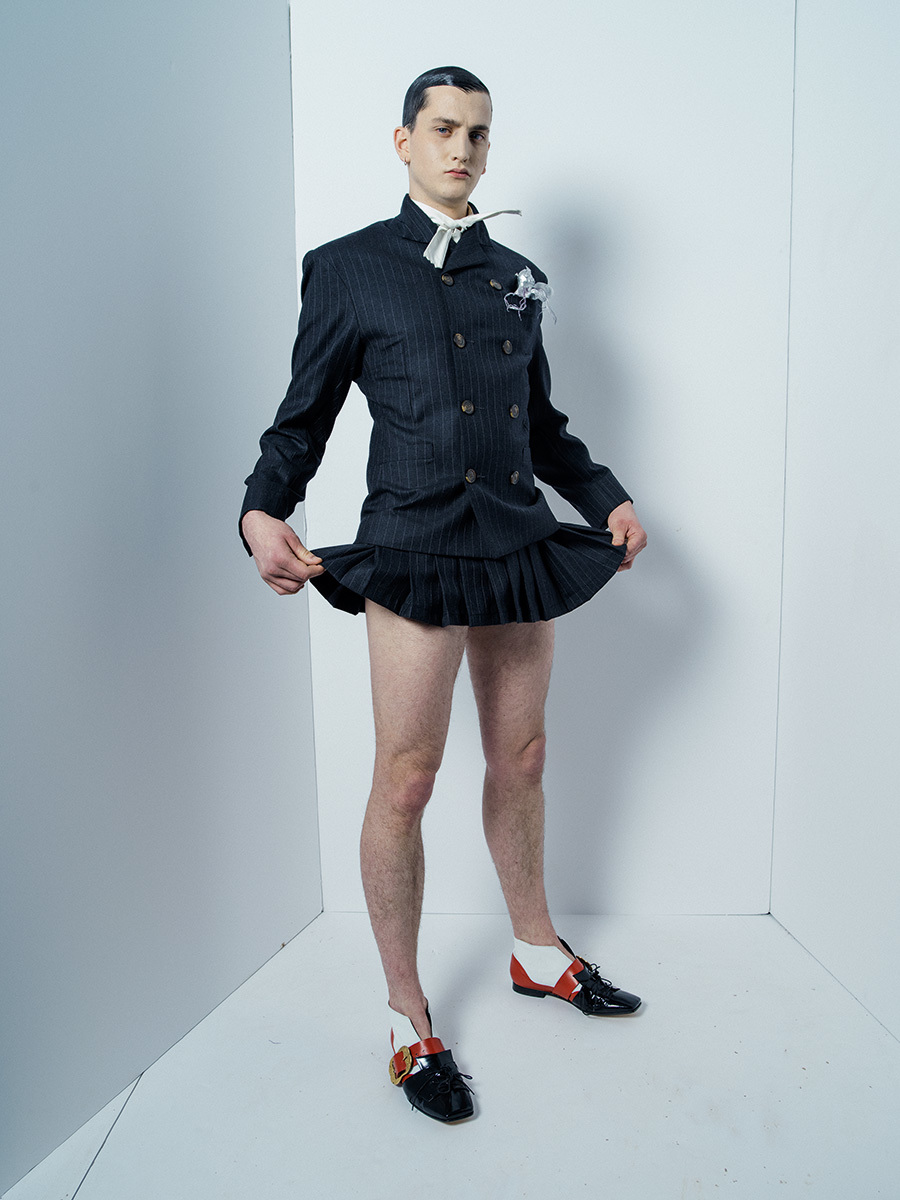
It could be the tagline for Charles Jeffrey’s so-called snowflake generation — those millennial egomaniacs — but this snowflake’s successes have hardly been served up on a silver platter. “We had to stay in a hotel once because my mom didn’t have any money,” he notes, recalling watching her count pennies on the hotel counter and having to get charity packed lunches from his friend’s mother. He got through his studies on scholarships and a student loan, and his mother was eventually able to help him with rent for a year and a half. But the London movement LOVERBOY represents is by no means a bunch of social media brats, who just like to party. “When I first started at Vogue Fabrics I was fucking terrified. It was the dirtiest, most crazy place with these drag queens falling on the floor and stuff,” Charles recalls. “But there’s a camaraderie there that brings a validation to another way of looking at life — it’s a queer space.” Talking about the performance artists and large papier-mâché creations painted like the Stars and Stripes and the Union Jack, which were part of his last show, he admits he felt compelled to comment on the political climate.
“I’m starting to realize the responsibility I have now as someone who has a platform to put out work that people respect. So I knew when we were doing that British-American butt plug goddess,” he says of those flag-painted mastodons, not a hint of irony, “that it was my first political statement.” On his runway that might be the case, but the movement he spearheaded seasons before has a lot more political clout than Charles and his Loverboys may realize.
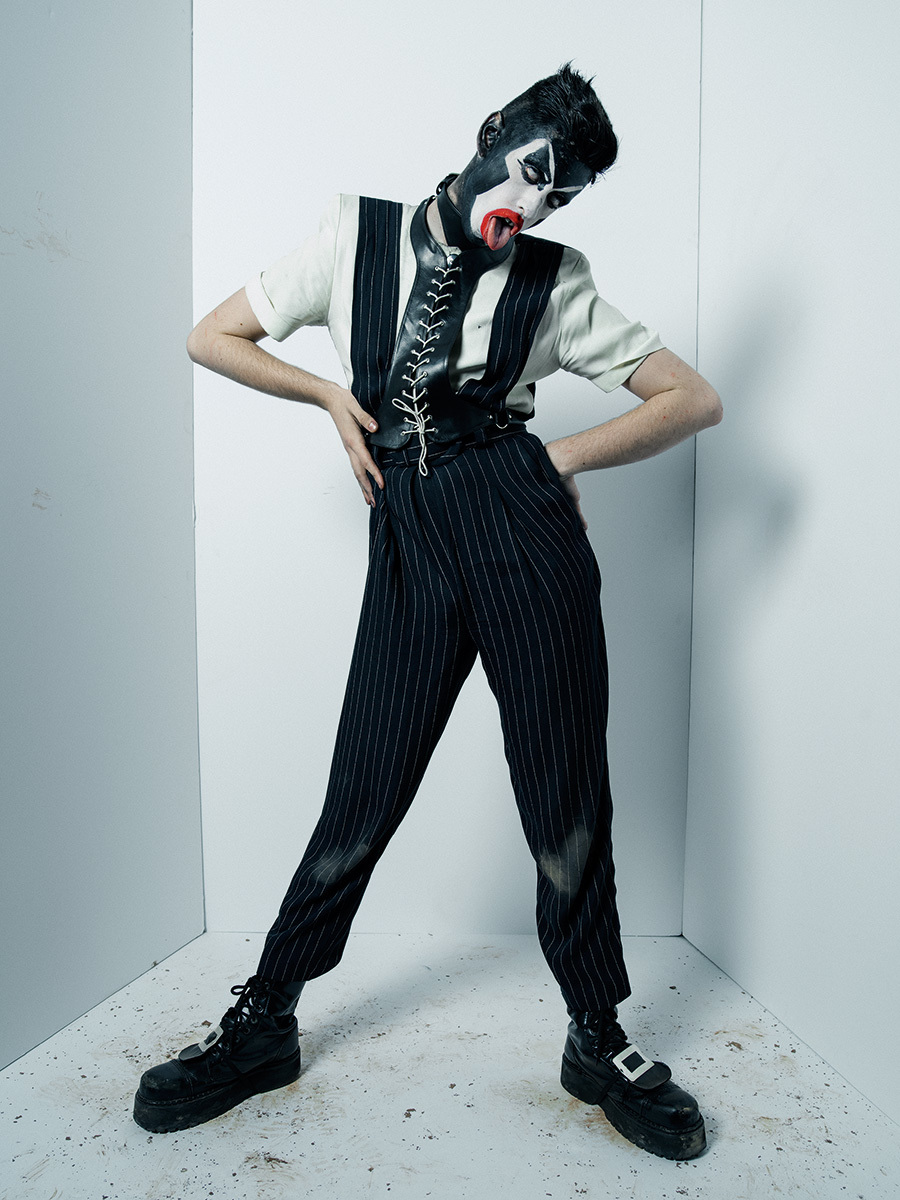
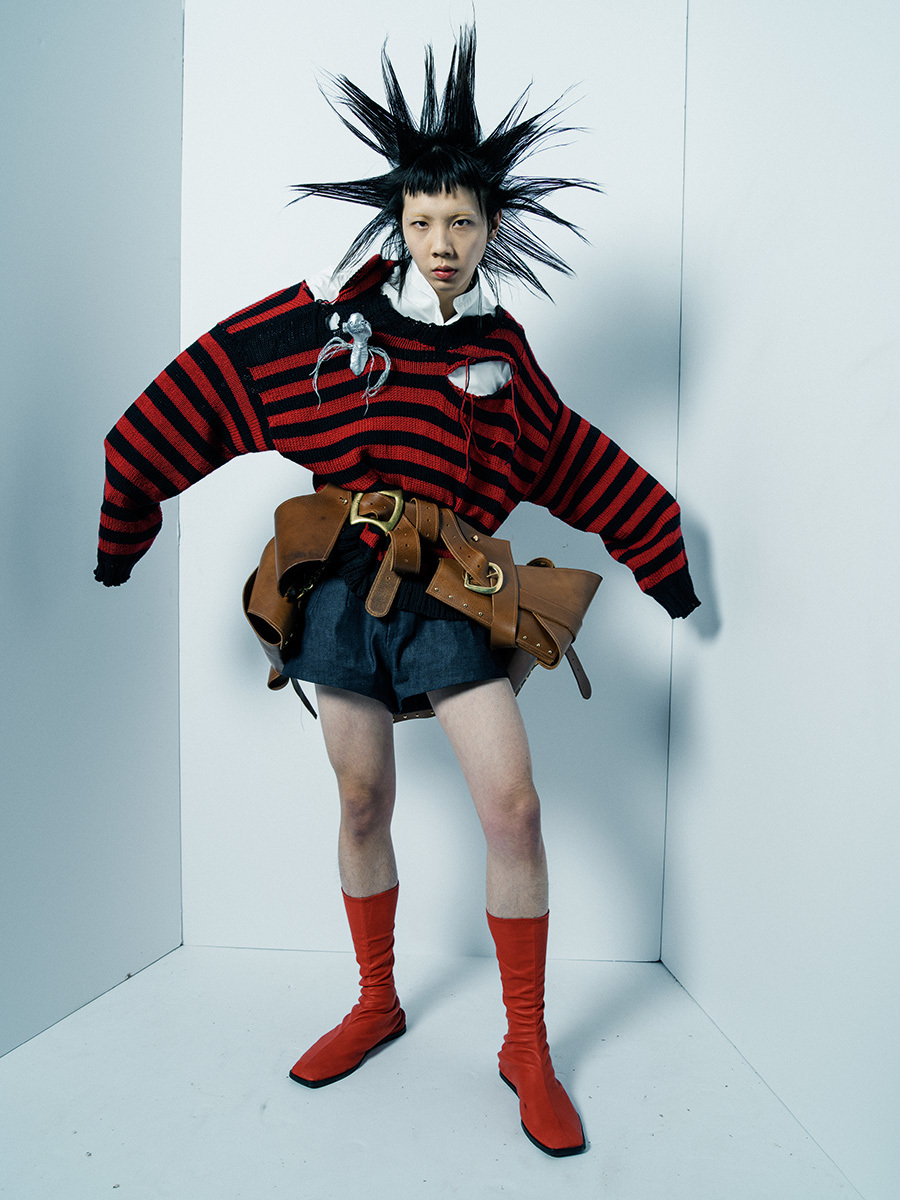
Louis Chen
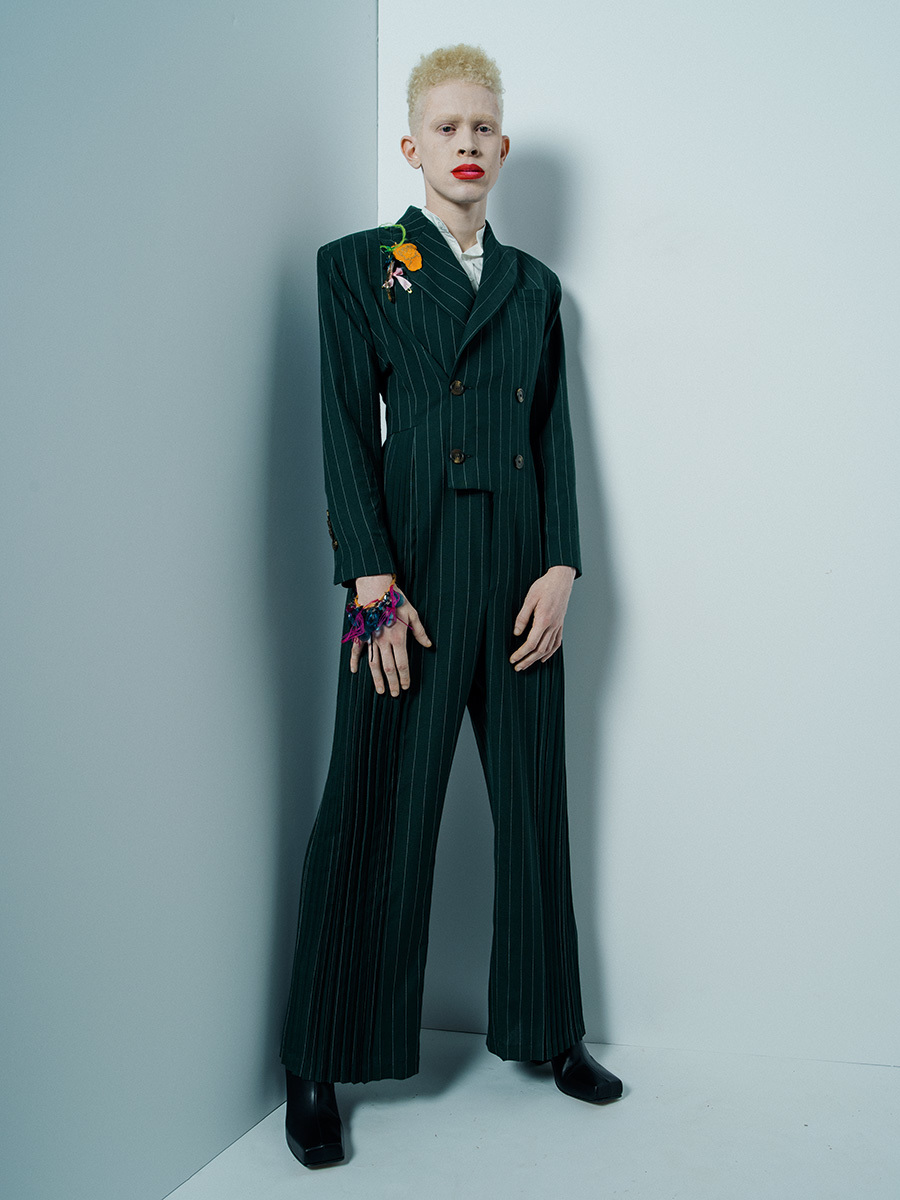
Credits
Text Anders Christian Madsen
Photography Tim Walker
Show Styling Jack Appleyard
Hair John Vial for Revlon Professional. Makeup Lucy Bridge at Streeters and the M.A.C Pro Team. Set design Gary Card. Show casting Madeleine Østlie at AAMO Casting. Set design assistance Lydia Chan. Show casting assistance Billie Turnbull and Najia Lisaad. Models Charles Jeffrey. James Spencer. Cezar Banaszczyck. Abolaji at AMCK. Louis Chen. Harriet Scott. Harry Appleyard. Jordan a NII. Niall Underwood. Harry Charlesworth. Ben Blackmore at Models1. Xander Ang. Scotty Sussman. Dancers Luke Smith, Jenkin Van Zyl, Kevin Brennan, Liza Keane, Waj Hussien, Alex Padfield, Bradley Sharpe, Emily Rose England, Angelica Bryant, Jack Powers Morrisey, Borys Korban and Strong Theveethivarak at Theo Adams Company.
